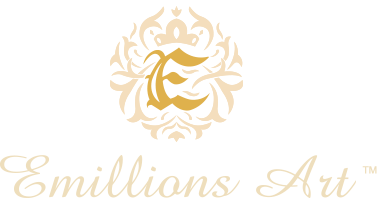Public Art is a category of art intentionally created to be displayed or experienced in public spaces and intended to engage a wide and diverse audience. Public art encompasses a broad spectrum of artistic expressions, including sculptures, installations, murals, monuments, performances, and multimedia works, often integrated into the urban or natural environment and accessible to the public free of charge. Public art plays a multifaceted role in society, serving as a form of cultural expression, a vehicle for social commentary, and a means of activating public spaces.
Key elements and concepts associated with public art in the academic context include:
Accessibility: Public art is characterized by its accessibility to a broad audience. It is intentionally placed in public spaces, such as parks, plazas, streets, or transportation hubs, to be encountered by people going about their daily lives.
Site-Specificity: Many public art projects are site-specific, meaning they are created to interact with or respond to the particular environment in which they are situated. Site-specific works are often designed to harmonize with the physical, cultural, or historical characteristics of the location.
Civic Engagement: Public art has the capacity to engage communities, stimulate dialogue, and reflect the values and aspirations of the people in a particular locale. It can serve as a catalyst for public discussions on cultural identity, social issues, and the built environment.
Cultural Expression: Public art serves as a means of cultural expression, and it often reflects the creativity and identity of a community, nation, or region. Artists may draw from local history, traditions, or contemporary issues to inform their work.
Artistic Mediums: Public art can encompass a wide range of artistic mediums, including sculpture, painting, digital media, performance, sound art, and more. The choice of medium often depends on the artist’s creative vision and the objectives of the project.
Collaboration: Public art projects often involve collaboration between artists, architects, urban planners, communities, and public institutions. Successful public art endeavors may require a combination of artistic expertise, technical skills, and community input.
Funding and Support: Public art is frequently funded through a combination of public and private resources, including government agencies, public commissions, private foundations, and community organizations. Funding models can vary widely by project and location.
Maintenance and Conservation: The preservation and ongoing maintenance of public art are essential for ensuring the longevity and integrity of the artworks. Maintenance plans are often developed as part of public art projects.
Controversy and Debate: Public art can be a source of controversy, as it is often exposed to public scrutiny and diverse opinions. Debates may arise concerning aesthetics, cultural representation, and public funding for art projects.
Public Art Policies: Some regions and municipalities have established public art policies, which may require a percentage of construction budgets to be allocated for public art installations as part of public infrastructure projects.
Public art is a dynamic and evolving field that engages with space, place, identity, and community issues. It serves as a platform for artists to interact with the public and provoke thought and discussion on various topics. Studying and analyzing public art in an academic context contribute to a deeper understanding of its social, cultural, and artistic significance.



